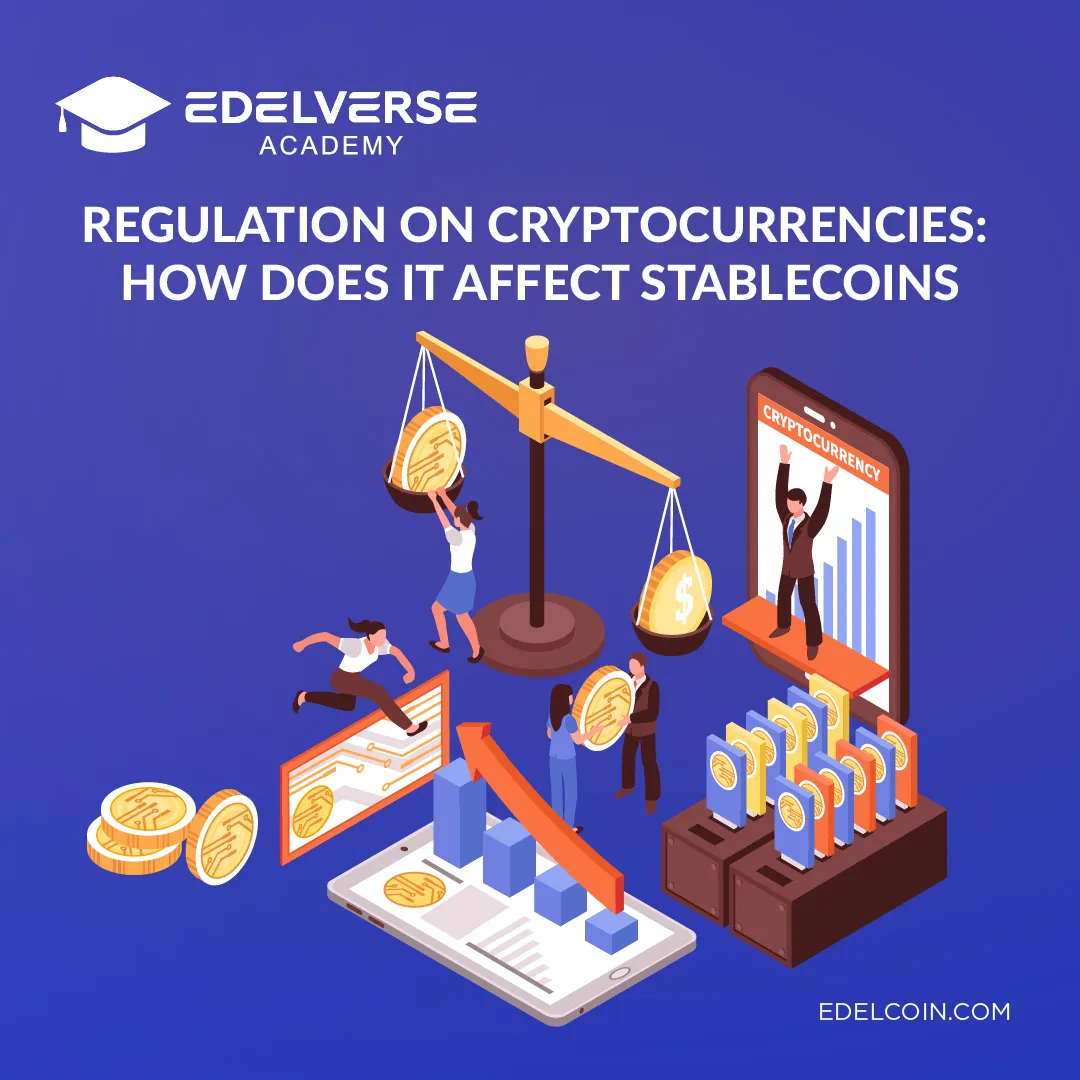
Regulation on Cryptocurrencies: How does it affect stablecoins
Introduction
Watch this article on YouTube
Let's start with the fact that stablecoins are a type of cryptocurrency that has been developed to reduce the volatility associated with cryptocurrencies. They are usually bound to reserves of stable assets, such as fiat currency (for example, the US dollar), gold, or other cryptocurrencies. However, like all other cryptocurrencies, stablecoins are subject to regulation by various government agencies. In our today's article, we will look at how regulation affects stablecoins and cryptocurrencies in general. And we are going to use Edelcoin as an example.
Regulation of cryptocurrencies
First of all, cryptocurrency regulation is a complex process that involves many aspects. One of the main issues is how cryptocurrencies are classified for regulation. Many countries, including the USA, classify cryptocurrencies as commodities, which means that they fall under the jurisdiction of the Commodity Futures Trading Commission (CFTC). Other countries, such as Japan, classify cryptocurrencies as a currency, which means they fall under the jurisdiction of their central bank.
The impact of regulation on stablecoins
Regulation of cryptocurrencies can have a significant impact on stablecoins. First of all, regulation can affect the ability of stablecoins to maintain their stability. If regulators decide that stablecoins cannot use certain assets as a reserve, this may cause fluctuations in their price.
Secondly, regulation may affect the ability of stablecoins to perform their function as a medium of exchange. For example, if regulators decide that stablecoins cannot be used for certain types of transactions, this may limit their applicability.
Thirdly, regulation can affect the credibility of stablecoins. If a local regulator decides that stablecoins do not provide sufficient transparency or security, this may undermine the confidence of investors and users in them.
Edelcoin: One of the best stablecoins
Edelcoin is a unique example of a stablecoin that is fully secured by a portfolio of precious and base metals. Such an approach makes it less susceptible to volatility compared to tokens backed by a single asset and provides a stable or low-volatility means of preserving value, which is isolated from inflationary fiat currencies and monetary policy.
Edelcoin is an ERC-20 token that works on the Ethereum blockchain and will be expanded to EVM-compatible chains. Each Edelcoin is secured by pre-existing metals stored solely to support coin issuance. Each Edelcoin has an excess reserve of supporting metals. Each coin is 125% backed by actual metals. In addition, such a reserve is regularly checked and monitored by independent parties.
Edelcoin offers opportunities to generate income using additional services from the Edelverse. By using the lending protocol, users can lend their coins and receive interest from secure and transparent transactions between participants secured by smart contracts. In addition, the Edelverse offers services that allow token holders to deposit their assets into liquidity pools, receiving trading commissions, and proportionally distributed rewards.
Conclusion
Regulation of cryptocurrencies and stablecoins remains a complex and dynamic area. However, as we can see with Edelcoin, stablecoins can offer unique advantages and opportunities that can help them overcome these challenges. It is important that regulators and the industry continue to work together to ensure the safe and effective use of these innovative tools.

Test Your Knowledge
- What are stablecoins? What cryptocurrency problem do they solve?
a. The problem of volatility since they are bound to other assets.
b. The scalability problem thanks to consensus algorithms.
c. The security problem thanks to using cryptographic algorithms. - What does the regulation of stablecoins affect?
a. The ability to maintain stability.
b. The ability to be a medium of exchange.
c. All of the above. - What is Edelcoin, and what advantages does it offer?
a. This is a stablecoin secured by a portfolio of precious and base metals. It offers a stable means of payment.
b. This is a gold-backed stablecoin. It offers opportunities to generate income through mining and trading.
c. This is a stablecoin backed by the US dollar. It offers opportunities to generate income through bets and dividends.
Correct answers: 1 a, 2 c, 3 a.
Contents





